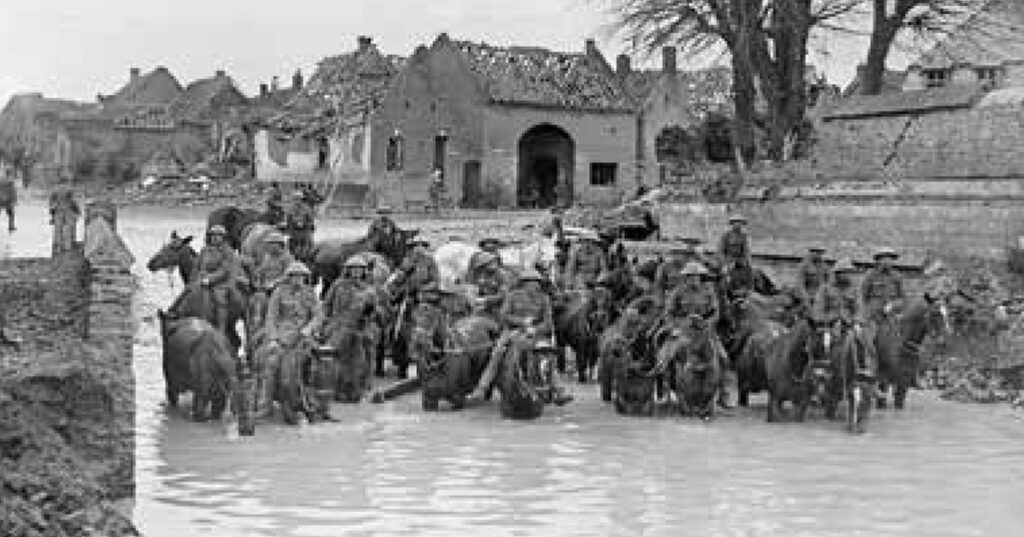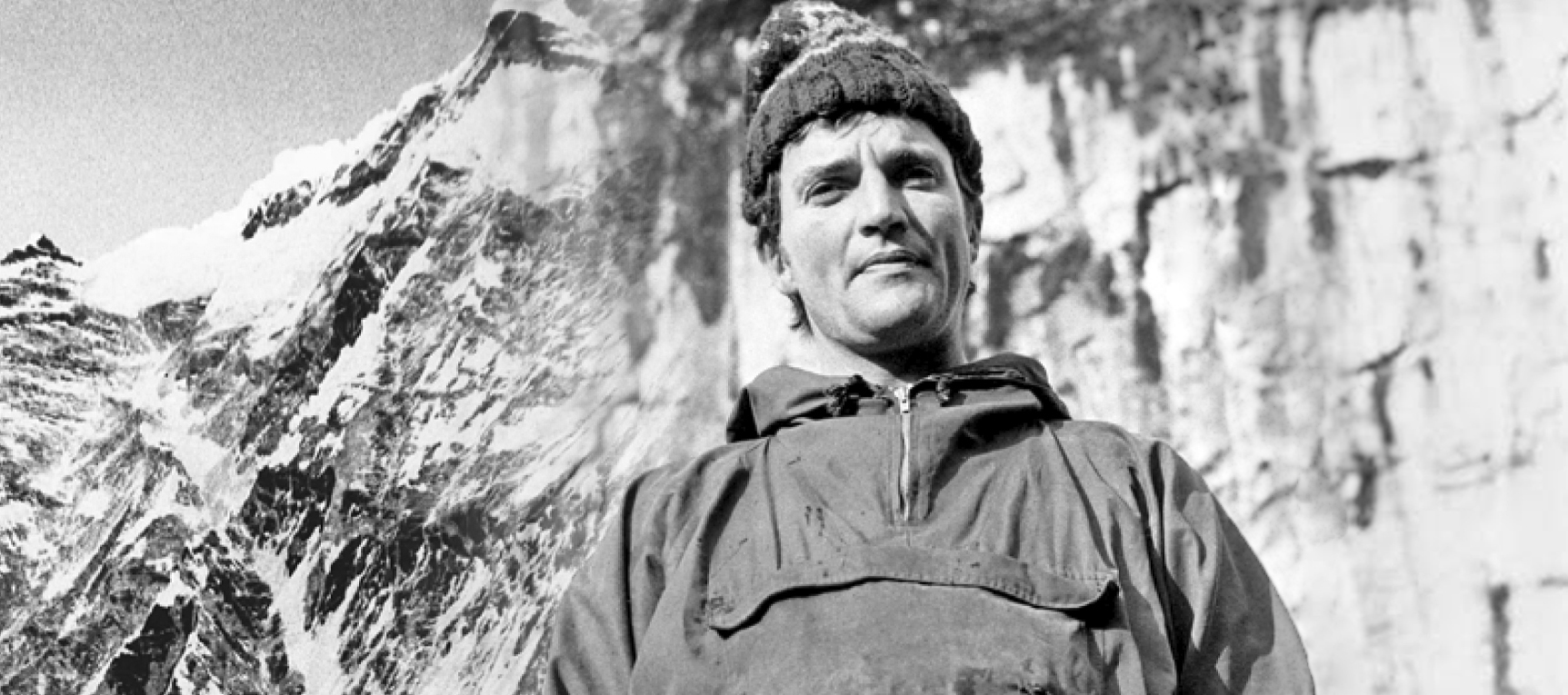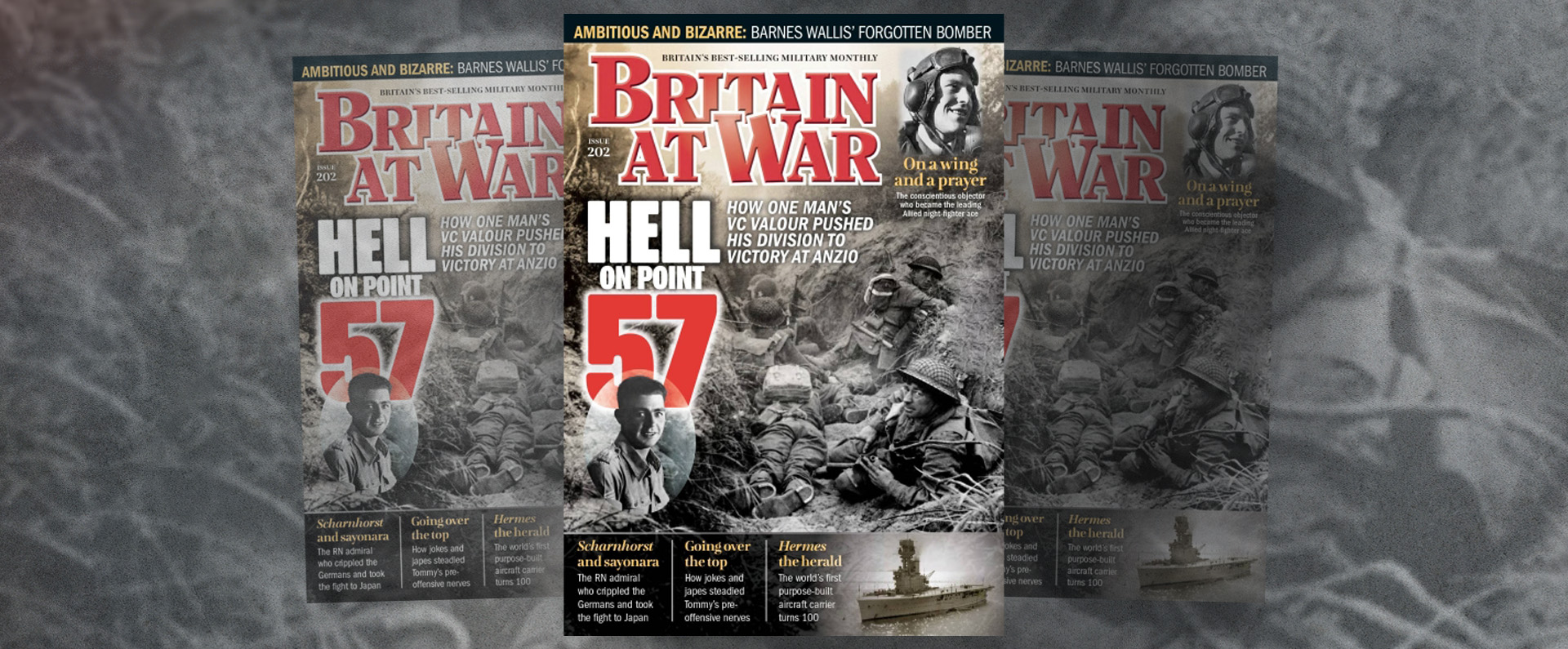
Published in Britain at War in February 2018.
Acting Captain George Henry Tatham Paton VC, MC
George Henry Tatham Paton was born in Innellan, near Dunoon, Argyllshire, on 3 October 1895. He was the only son of Sir George William Paton, who at the time was working for Messrs Ross, Corbett & Co of Greenock. George Paton Snr later became the Deputy Chairman of Bryant & May and was knighted in 1930. George Paton Snr and his wife Henrietta (née Henderson) also had a daughter.
George Paton Jnr was educated at Rottingdean School, near Brighton, and Clifton College, Bristol. On 1 October 1914, and two days before his nineteenth birthday, he was commissioned as a second lieutenant into the 17th County of London Regiment. A year later, in October 1915, he was promoted to full lieutenant and in January 1916 he was transferred to the Grenadier Guards. In July 1916, he joined the 4th Battalion of that regiment as a member of No 2 Coy.
In September 1916, Paton took part in fighting at the Battle of the Somme which, by that point, had been going on for more than two months. His military career received another lift in June 1917 when he was appointed as acting captain, in charge of 4 Coy. For his bravery on the first day of the Third Battle of Ypres in Belgium during August 1917, Paton was awarded the Military Cross (MC) for bravely leading his men during an advance through a fearsome artillery barrage.
However, it was for his sustained courage during the Battle of Cambrai in northern France that he was awarded Britain and the Commonwealth’s most prestigious gallantry medal: the VC. The Battle of Cambrai had begun on November 20 1917 and involved a substantial British attack followed, in turn, by the biggest German counter-attack on the British Expeditionary Force (BEF) since the Great War had started more than three years earlier.
Indeed during this battle, there was a constant toing and froing as both sides tried to assert their authority on the enemy. On 27 November, the 2nd Grenadier Guards had taken part in an ill-conceived offensive in an attempt to capture the Bourlon Ridge, west of Cambrai. On 30 November, the Germans had advanced and on 1 December the British launched their own counter-attack in which the 4th Battalion Grenadier Guards attempted to capture the village of Gonnelieu, just south of the Péronne-Cambria road: this had fallen to the Germans the previous day.
Acting Captain Paton commanded the support company during this action and, although the attack failed, it prevented the Germans from advancing out of Gonnelieu. It was during this fierce fighting that Paton once again displayed outstanding bravery. The citation for his VC takes up the story:
“For most conspicuous bravery and self-sacrifice.
“When a unit on his left was driven back, thus leaving his flank in the air and his company practically surrounded, he fearlessly exposed himself to re-adjust the line, walking up and down within fifty yards of the enemy under a withering fire. He personally removed several wounded men, and was the last to leave the village. Later, he again re-adjusted the line, exposing himself regardless of all danger the whole time, and when the enemy four times counter-attacked he sprang each time upon the parapet, deliberately risking his life, and being eventually mortally wounded, in order to stimulate his command.
“After the enemy had broken through on his left, he again mounted the parapet, and with a few men – who were inspired by his great example – forced them once more to withdraw, thereby undoubtedly saving the left flank.”
Paton had been killed aged just 22. His fellow officers and his men were deeply distressed at the loss of such a courageous man and a wonderful leader. Sir Henry Streatfield, the Commanding Officer of the Grenadier Guards, wrote to Paton’s parents expressing his deepest sympathy at their loss:
“Amongst all who have lain down their lives upon the field of Honour, there is no one that I regret the loss of more than your son. He was a born soldier and leader of men, beloved by his brother officers and esteemed and respected by his men, and his loss to the regiment is a great one. We, his old comrades, will long remember him with affection.”
Viscount Gort was another senior figure to write to Paton’s parents: “His loss was a great personal grief to me, as he was extremely popular with everybody, both officers and men; always cheerful in difficulties, and above all, an officer who had a wonderful aptitude for soldiering which I am confident would have carried him a long way had he been spared to develop it.”
Paton’s VC was announced in The London Gazette on 13 February 1918: he thereby became the first Grenadier Guards officer to receive the award since the Crimean War. Paton’s parents received their son’s posthumous VC from George V at an investiture at Buckingham Palace on 2 March 1918.
Paton was buried at the British extension to Metz-en-Couture Cemetery in northern France, where his headstone bears the inscription: “Bright is their glory now boundless their joy above.” There are also several memorials that bear his name, including the War Memorial on the promenade at Dunoon, Argyllshire, close to his birthplace, and also the War Memorial in the Territorial Army Centre in Mile End Road, Tower Hamlets, east London. At Putney Vale Cemetery in south-west London, his name is on a family headstone.
I do not own Paton’s medal group amongst my 200-plus collection of VCs and instead its home is in the Guards Museum, Wellington Barracks, central London. However, I am full of admiration for the gallantry of a wonderful solider thoroughly deserving to be described as one of “the bravest of the brave”.
Download a PDF of the original Britain at War article
For more information, visit:
LordAshcroftOnBravery.com


